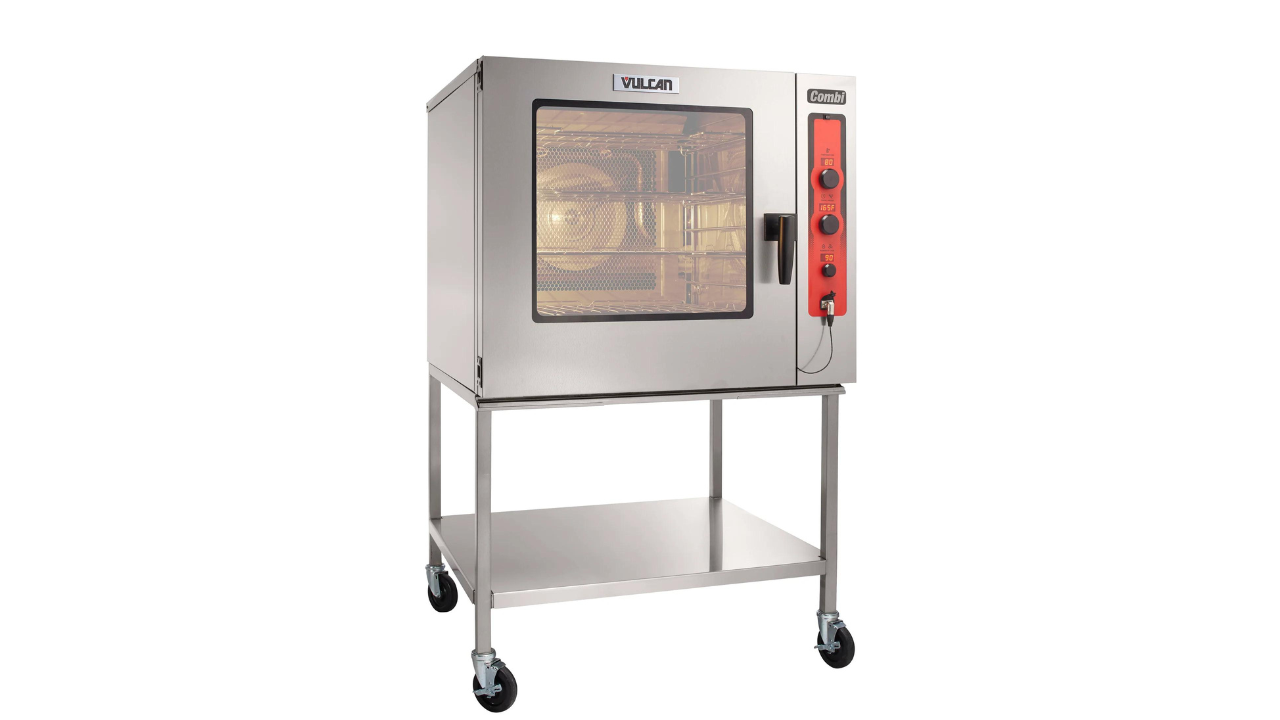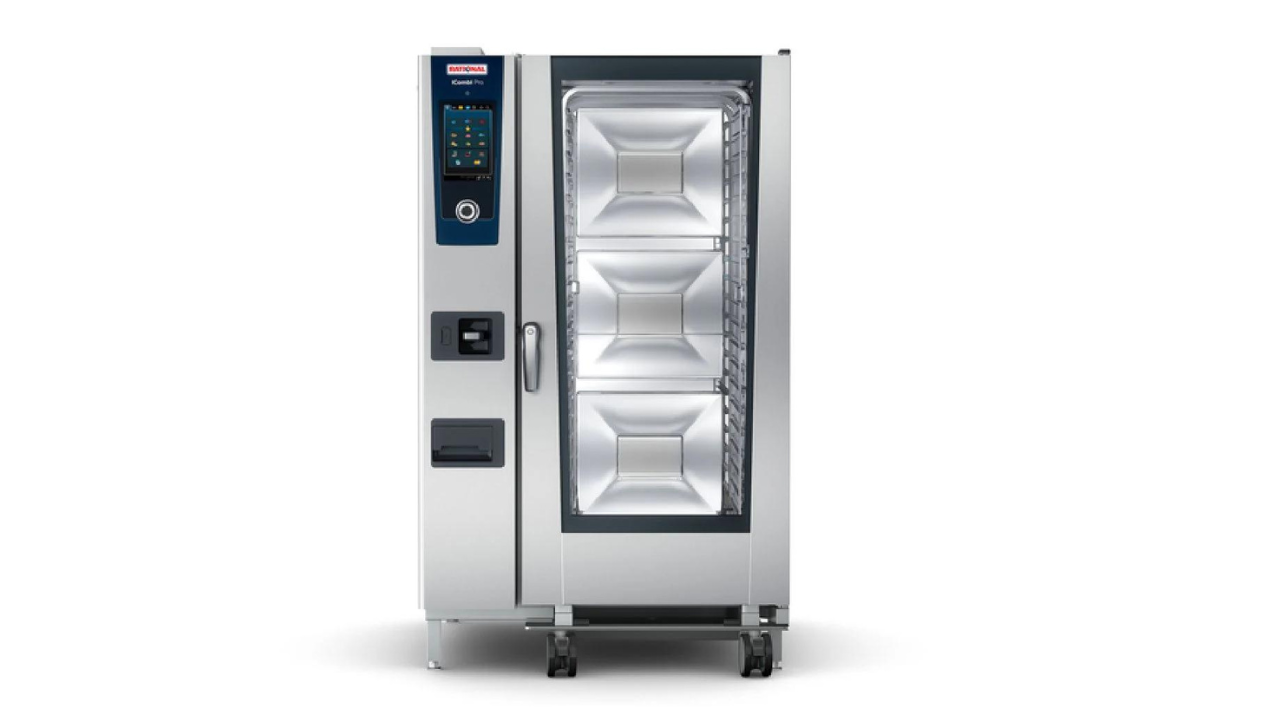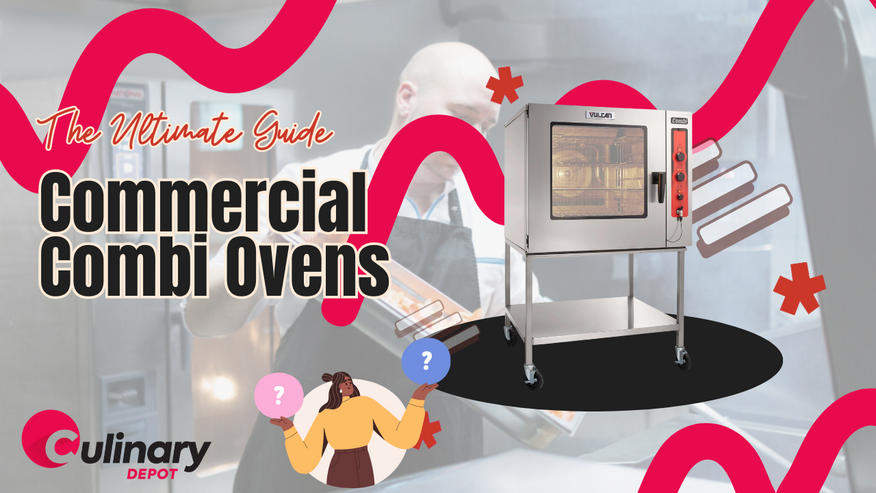Jan 26th 2024 - Team Member
The Ultimate Guide to Commercial Combi Ovens
In the realm of professional kitchens, commercial combi ovens have revolutionized the cooking process, offering versatility and efficiency. With capabilities ranging from acting like a slow cooker to providing steam settings, these ovens have become a staple in busy kitchen environments. This comprehensive guide, enriched with essential long-tail keywords, will delve into every aspect of combi ovens, ensuring an informed decision for your commercial cooking equipment needs.
What is a Combi Oven?
The Essence of Combi Ovens

- Combination of Techniques: Combining the features of conventional ovens with steam ovens, a combi oven offers an array of cooking functions.
- Electric and Gas Models: Available as electric combi ovens and gas combi ovens, catering to different energy preferences in professional kitchens.
Advantages Over Traditional Ovens
- Versatility in Cooking: Provides precise control over cooking environment, including humidity levels and temperature, allowing for consistent cooking of a wide range of menu items.
Key Features of Combi Ovens
Advanced Cooking Capabilities
- Multiple Cooking Steps: From baking to steaming, combi ovens facilitate various cooking steps in one cooking cycle.
- Precise Temperature and Humidity Control: Ensures food quality is maintained throughout the cooking time.
Technological Innovations

- Programmable Settings: Modern combi ovens come with programmable settings for maximum customization and consistent results.
- Digital Displays: Enhance the ease of monitoring and adjusting cooking parameters.
RATIONAL ICP 20-FULL NG
Choosing the Right Combi Oven
Considerations for Selection
- Type of Food and Cooking Time: Assess the type of food you'll cook and the required cooking time for each item.
- Size and Capacity: The oven cavity or cooking chamber should accommodate your kitchen's volume of food and fit sheet pans comfortably.
Electric vs. Gas Models
- Electric Models: Electric combi ovens offer efficient energy consumption and easy installation.
- Gas Models: Gas combi ovens are known for faster heating units and may suit kitchens with specific energy setups.
Installation and Maintenance
Ensuring Optimal Performance
- Proper Installation: Adhere to manufacturer recommendations for installing both electric and gas models.
- Water Conditions and Filters: Monitor water conditions and maintain the water filter to prevent issues like lime scale buildup.
Maintenance for Longevity
- Regular Cleaning: Utilize self-cleaning features or conduct manual cleaning with liquid detergents to maintain the oven's efficiency.
- Avoid Abrasive Materials: Refrain from using steel wool or wire brushes that can damage the oven's interior.
Cost and Efficiency Analysis
Balancing Cost with Benefits
- Initial Investment vs. Operational Efficiency: While combi ovens can be costly, they offer significant energy savings and reduced labor costs.
- Energy Consumption: Consider the energy consumption of the chosen model, as it impacts long-term operational costs.
Enhancing the Cooking Process
Expanding Culinary Horizons
- Slow Cooker to Steam Oven: Use the combi oven's versatile settings, from acting as a slow cooker to utilizing steam settings, to enhance the flavor and texture of food.
- Cooking Environment Control: Precise control over the cooking environment allows for consistent cooking, even for delicate items.
Advanced Cooking Techniques
- Steam Settings: Use steam settings for moist and tender results, especially beneficial for certain types of food like artisanal bread.
- Convection Cooking: Utilize the convection feature for faster cooking times and even cooking.
Challenges and Solutions
Addressing Common Issues
- Uneven Cooking: Ensure even distribution of food items within the oven cavity to avoid uneven cooking.
- Extended Cooking Periods: Manage cooking times and cycles to prevent overcooking or undercooking of food products.
Maintenance Best Practices
- Cleaning Cycle: Regularly run the cleaning cycle as per manufacturer recommendations.
- Monitoring Heating Element and Humidity Levels: Regular checks ensure the heating element functions optimally and the humidity levels are maintained.
Conclusion
Commercial combi ovens represent a significant advancement in commercial cooking equipment, providing a dynamic cooking process with a range of cooking functions. By choosing the right combi oven, professional kitchens can achieve precise control, energy savings, and versatility, elevating the quality of their culinary offerings.
For further insights into commercial kitchen equipment, visit Culinary Depot.
In summary, combi ovens are invaluable in professional kitchens for their versatile cooking capabilities, energy efficiency, and ability to maintain food quality. With careful selection, proper installation, and regular maintenance, these ovens can significantly enhance the cooking process, contributing to the success of any commercial culinary establishment.

